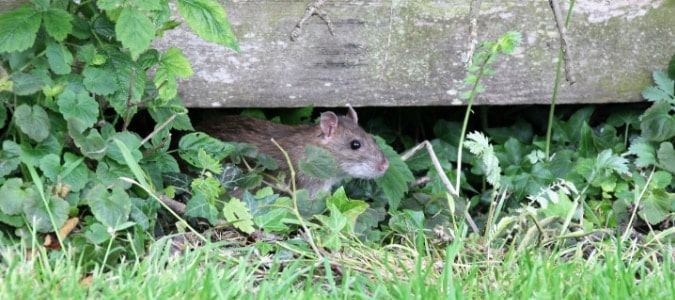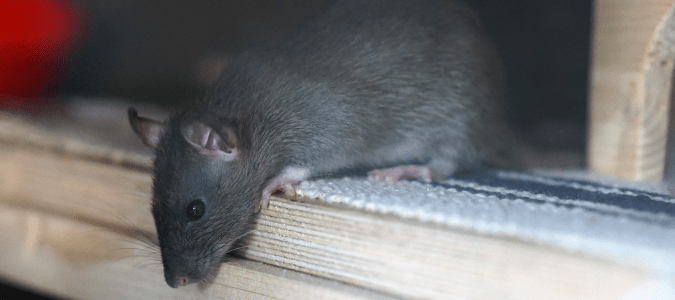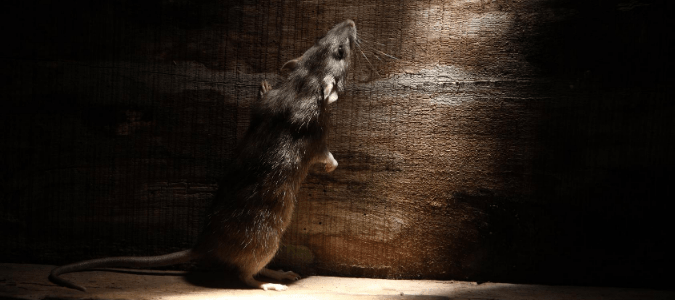Are rats damaging your garden? These pests can spread disease, damage plant life, cause structural damage to your home and annoy your pets.
The first step to a rodent-free yard is to understand the signs of rats in your garden. Then, there are steps you can take to prevent them from taking over your yard before it happens. If a rodent infestation has already made its way onto your property, you can follow these same steps to make your garden less attractive to them. However, you’ll need to contact a pest control professional in order to get rid of them completely.
Knowing the habits and abilities of rats is another way to understand how they operate and how to get rid of them. For example, it’s valuable to know how far they run from their nests, how high they can jump, if they can swim and more.
Finally, homeowners need to stay on the lookout for rat holes in their gardens. Some rat species burrow underground to stay safe from predators which can damage your garden.
If you suspect that you have rats in your garden or inside your home, call an expert pest control specialist right away.
Signs of Rats in Your Garden
If there is a pest wreaking havoc on your garden, the first step to eliminating it is to identify the animal type. Here are the signs that it could be a rat or a colony of rats:
-
Gnaw marks on your plants
-
Tiny burrow holes in the ground
-
Greasy smudge marks around the garden
-
Seeing shiny black droppings
How to Keep Rats Out of Your Garden
The first step to getting rid of rodents both indoors and outdoors is to make their habitat less welcoming. These measures can also be taken to prevent a rat colony from taking up space in your garden in the first place.
Rats and mice choose homes based on their needs. They want to nest somewhere that provides shelter from predators and gives them easy access to a food and water source. A garden is an ideal outdoor home for rats because they can hide in thick layers of mulch and eat plants.
Make Your Garden Less Attractive to Pests
Making your garden less welcoming to rats will encourage them to find somewhere else to live or stop a new colony from settling on your property. First, eliminate potential food sources. Rats prefer to eat a vegetarian diet, but they will feed on meat and dairy products if it’s available to them.
Do not leave bird seed or open containers of pet food outside. Rats are excellent climbers and can even access the bird feeders hanging from your trees. If you feed your pets outside, take up their food as soon as their meal time is over.
Rats will happily dig through your compost heap and trash bins to score a meal. If you have backyard compost, consider investing in a compost tumbler instead of using a compost heap. The tumbler will elevate the compost off the ground and keep it covered. Not only will that make it harder for rats to access the food, but it also eliminates the compost heap as a shelter for them to nest in.
Keep tight lids on your trash bins at all times, and do not let trash pile up outside your bins. You should also keep your yard free of debris that rats could hide in, like loose wood.
Take Proactive Measures to Keep Rats Out of Your Garden
Keeping your garden neat and tidy will make it harder for rats to hide. Keep your lawn mowed and watch for overgrowth around your fence line. If you mulch your garden beds, only use a thin layer so that rats can nest underneath it. If you have a deck or patio attached to your home, you also need to keep it tidy. Sweep up any food scraps after outdoor meals, and block any entrances to the area under the deck. Rats love to hide in that area.
Another measure you can take is to plant flowers and vegetables that deter rodents. Garlic, onions, tomatoes, marigolds, daffodils, lavender and rosemary are some examples.
If your rat infestation has gotten out of control, you can use rodent traps outdoors. However, you have to be mindful about where you place them so that your pets and kids do not stumble upon them and get hurt.
You work hard on your garden and lawn, and it should be a place you enjoy spending time with your family. Don’t let rats or other rodents take over your yard. Follow the steps outlined above to make it less welcoming for rat colonies. If you suspect that a rat colony has infested your garden, don’t want to call in professional help. A pest control expert can provide effective solutions before more damage occurs, and it’s best to leave trapping to the pros.
How Far Do Rats Travel From the Nest?
Rats like to build their nests close to a food source so that they do not have to travel too far and expose themselves to predators. However, if they need to, they will travel up to 300 feet from their nest to search for food and water.
Rodents like rats and mice are nocturnal animals who sleep during the day and use the covering of the night to find food. They carry their food home to eat in their nest and hoard food piles for safekeeping.
Rats are agile creatures who can run, climb and jump. They can jump horizontally up to four feet and vertically up to three feet. They can even swim and hold their breath underwater for up to three minutes. Finally, they can fit through tiny holes and drop from 50 feet without hurting themselves.
As you can see, rats are resilient, adaptable and crafty animals. The best way to kick them off your property is to call in professional pest control services.
What Does a Rat Hole Look Like?
Some types of rats create rat holes, also known as rat burrows, to access underground habitats. A rat hole looks like a circular opening in the ground that’s two to four inches across. The hole leads to an expansive underground tunnel system that rat colonies live in together.
Rat hole openings are smooth and the dirt is tightly-packed. However, there may be loose dirt scattered around the opening from the digging process.
Homeowners often discover rat burrows near the foundation of their home, overgrown areas of their yard and under piles of debris. This is one of the reasons why it’s so important to keep your yard clean and tidy. You can also discover indoor rat holes in your basement. Call in an expert in rodent control to help.
What If There Are Multiple Rat Holes?
Rat colonies typically use the same hole to enter and exit their burrows. While some rats may dig an escape hole somewhere else, it’s not likely that you will see another hole on the other side of the same tunnel. However, that doesn’t mean that you won’t find more than one rat burrow in your yard.
Discovering more than one rat hole in your yard usually means there are multiple rat colonies. Most types of rats like to live together, and a rat burrow can house up to ten rats. However, some species, such as the Norway rat, prefer to live alone.
Rats are prolific and speedy breeders, and they raise their pups inside their underground tunnels. The tunnels can go as deep as 18 inches underground. Not all rat species dig burrows. The most common types of rats that burrow are Norway rats (also known as brown rats) and roof rats (also known as black rats). Burrow holes may also belong to house mice.
Is the Rat Hole Active?
You may also stumble upon inactive rat holes. If there are spider webs or other debris clogging the rat hole entrance, it is not active. You can also fill the hole with some paper and see if the rats clear it away within a few days.
If a rat hole is active, you can try blocking it up with mesh chicken wiring that they cannot chew through. Blocking their entryway will force them to find a new place to burrow; however, that may still be in your yard or even inside your home.
The best way to rid your yard of rats is to call a professional pest control service. They will identify all of your rat holes, the type of rat making a home in your yard and the best ways to eradicate the infestation.
ABC Can Help with Pest Problems
Managing a rat problem can be unnerving for a number of reasons. If rodents, wildlife or any other variety of animal or insect pest is giving you trouble, contact ABC. Our highly-trained pest specialists can remove any unwelcome visitors on your property, so you can feel comfortable at home again.


